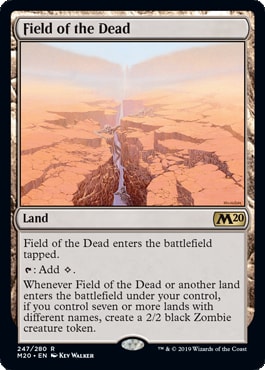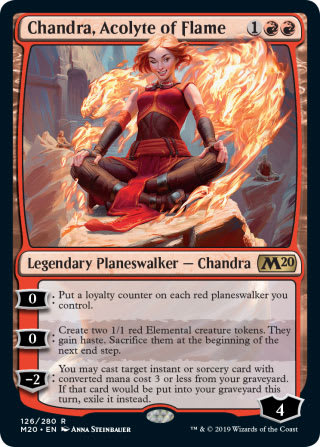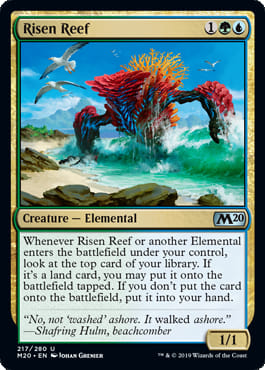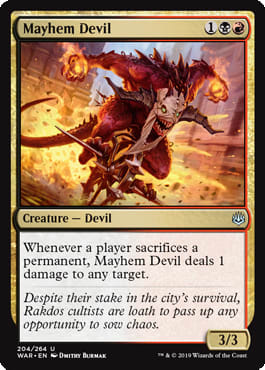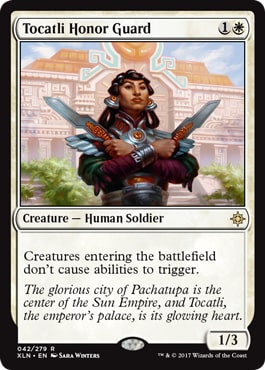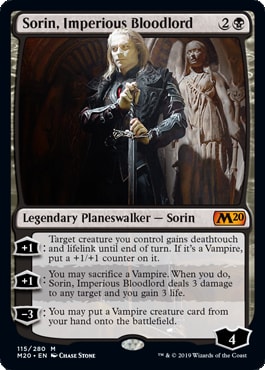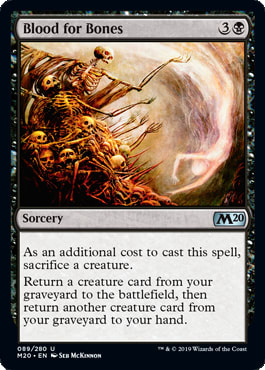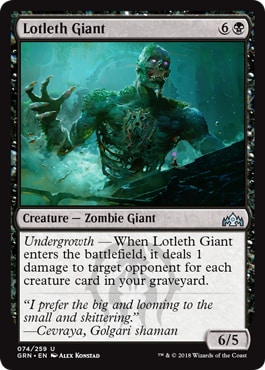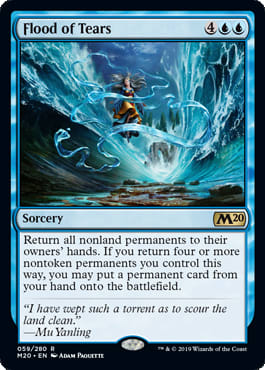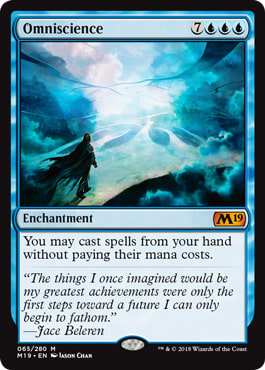Wilderness Reclamation untapping Azcanta, the Sunken Ruin.
Nissa, Who Shakes the World fueling huge Hydroid Krasis.
Heroic Reinforcements giving haste to the second History of Benalia token.
Runaway Steam-Kin fueling massive Experimental Frenzy turns.
In the later stages of a Standard format, we tend to take for granted some of the clever card pairings that make up the format's best decks. Once they've been firmly established we just accept them as what they are and forget about the parts that make up the whole. However at some point early in the format a player or players had the idea to try them together and it gelled so well that it became a cornerstone of the format.
Trying to find those pairings in a new format is vitally important if you want to be ahead of the game, as the first few weeks of a new Standard format is the time period where you can gain the largest edge possible in a Constructed format. So let's take a look at what Core Set 2020 has to offer and try and find the next great pairing of cards.
We utilized this combo in our video Monday alongside the guildgates and their associated payoffs, but realistically you can play Scapeshift and Field of the Dead in almost any deck as a big combo finish. Seven lands in play nets you seven zombies, and it scales up exceedingly well once you throw in a second copy of Field of the Dead. Furthermore, each additional land drop will net you another zombie or two, making this one of the premier endgames in the format.
One card combos don't exist very often in Standard, but that's exactly what Scapeshift promises you if you can just get those first seven lands in play. Just like in Modern, this can be via ramp spells or by just playing a longer game. There are some deck-building costs associated with making sure you have the proper number of unique land types, but playing a random gainland or temple isn't the end of the world. You can even milk some value out of it by playing cards like Field of Ruin, Blast Zone, or Arch of Orazca.
Scapeshift and Field of the Dead won't be legal together for very long, but they will certainly be a fixture together for as long as they are.
There's no doubt that Risen Reef is one of the most powerful and hyped cards in Core Set 2020, with many new decks trying to abuse it's power. It is being compared to Rogue Refiner, but Risen Reef has an astoundingly higher ceiling than Rogue Refiner could ever dream. Rogue Refiner is a nice value card, but Risen Reef is a engine.
The big question of course is "how to run the engine?" Is it okay to just play Risen Reef alongside a few other elementals like Leafkin Druid and Wildgrowth Walker? Do you want to go all the way with a full elemental theme? Do we branch out into more colors? What cards play best with Risen Reef?
To answer the last one we have another one of the more exciting cards in Core Set 2020, Chandra, Acolyte of Flame. Risen Reef adds "draw two cards and play lands for free" to Chandra's middle loyalty ability, which amounts to an obscene amount of value. Add this to the fact that Chandra is a great three-mana planeswalker and you've got a very interesting duo. Chandra requires a certain amount of cheap spells to get full value, and finding room in your elemental deck for that can be tough, but the synergy here is undeniable.
Speaking of Chandra, making and sacrificing two creature tokens a turn falls right in line with everything a Rakdos Aristocrats deck has ever wanted to do. You can sacrifice them both to Priest of Forgotten Gods, pump them with Judith, the Scourge Diva sacrifice them to Plaguecrafter, and more, with perhaps the most exciting combo being Mayhem Devil adding on a free Forked Bolt every turn.
Once again, Chandra is already a good card, and adding on these sorts of extra synergies is what takes a card from good to great. Rakdos sacrifice-based decks have been on the fringes of Standard for a while now, but it's possible that Chandra could be what it takes to push them over the edge.
There's no doubt that Risen Reef and Nissa, Who Shakes the World are two of the most powerful cards in Standard right now. Each one creates an insurmountable advantage if it is left to its own devices, but each is also hard to answer profitably. In Modern, White decks get to turn to a suite of powerful hate bears to turn off what decks want to do. Thalia, Guardian of Thraben, Gaddock Teeg, Meddling Mage, Ethersworn Canonist... the list goes on and on. Well what if I told you Standard has some hate bears too?
Tomik, Distinguished Advokist and Tocatli Honor Guard both help to answer each of the aforementioned cards in their own way, while also being difficult for typical Simic decks to kill. Tomik removes the ability for Nissa to make any creatures while being a very well costed attacker, while Tocatli Honor Guard is weaker overall but much more devastating for the elemental package as well as the explore package.
Wow Jim... play Sorin, Imperious Bloodlord with other Vampires... that's the groundbreaking strategy advice then pay you the big bucks for!
Okay, stop sassing and listen to me for a minute.
Yes, Sorin is a great card and plays very well with Vampires. Champion of Dusk is a powerful Vampire payoff card that was always a little too expensive to be worth playing. Put them together though and you've got a match made in heaven (or wherever Vampires usually hang out). However the important thing to note here is what this pairing does for the Vampire archetype as a whole.
Typically Vampires was just seen as a beatdown deck similar to White Weenie. You play 1-drops, you pump them up, and you attack. Some of the most successful Vampire decks even played Venerated Loxodon, further displaying the White Weenie connection. However, the introduction of Champion of Dusk, the potential for massive card advantage, and the flexibility and power of Sorin have taken Vampires far beyond just a mindless tribal deck. There's more method to the madness and new Vampire decks need to be built with this in mind. With such a great card advantage engine there isn't a need to try and blitz opponents out with 1-drops, and cards like Legion Lieutenant may be more of a liability than is necessary now.
Don't just add new cards to existing decks, think about how new cards can fundamentally alter what an old deck is trying to do.
Speaking of new cards altering what an old deck can do, remember the sweet Golgari Dredge deck that was floating around for a while? It was packed to the brim with self mill cards like Glowspore Shaman and Stitcher's Supplier, while trying to get paid off with some undergrowth effects and looping Molderhulk and Memorial to Folly. The problem was it did a lot of wheel spinning and not a lot of interacting just to get a few 6/6s.
Blood for Bones may just change that.
Blood for Bones is a great value card, but it can be more if you put in the work. Sacrificing a Stitcher's Supplier to bring back a Jadelight Ranger to your hand and a Molderhulk to play is a fantastic value play, but Blood for Bones also opens up a world of potential endgame power as well with Lotleth Giant. Golgari Dredge decks used to play one copy of Lotleth Giant to try and dig up with Memorial to Folly and cast in the late game, but that was a very convoluted and expensive play. Now we can do it for four mana with a card that's already good with the rest of the deck.
It may not make Golgari Dredge good enough, but Blood for Bones is a powerful card that shouldn't be overlooked.
Every time an Omniscience is put into the battlefield off of a Flood of Tears, an angel gets its wings. The thing is, it isn't actually that crazy.
There's a lot of murmuring going around about Flood of Tears being a breakout card this weekend at SCG Tour Worcester, the first Standard event of the new format, and much of it is on the back of the fact that Omniscience was inexplicably in Core Set 2019. With Standard Simic ramp decks trying constantly to outdo each other with the biggest possible endgame - currently Mass Manipulation for six - Omniscience certainly presents the most absolute endgame imaginable.
Simic Flood | Standard | Pykapower, 5-0 Magic Online League
- Creatures (11)
- 3 Arboreal Grazer
- 4 Leafkin Druid
- 4 Risen Reef
- Planeswalkers (9)
- 1 Jace, Wielder of Mysteries
- 4 Narset, Parter of Veils
- 4 Tamiyo, Collector of Tales
- Sorceries (5)
- 1 Overflowing Insight
- 4 Flood of Tears
- Enchantments (10)
- 3 Gift of Paradise
- 3 Omniscience
- 4 Urban Utopia
- Lands (25)
- 5 Forest
- 6 Island
- 2 Blast Zone
- 4 Breeding Pool
- 4 Hinterland Harbor
- 4 Temple of Mystery
- Sideboard (15)
- 4 Healer of the Glade
- 3 Negate
- 1 Nezahal, Primal Tide
- 3 Nissa, Who Shakes the World
- 2 Sorcerous Spyglass
- 2 Spell Pierce
Yes this is a deck that went 5-0 in a Magic Online league.
It's not that hard to figure out that if you get an Omniscience onto the battlefield you should be able to win, but with Tamiyo, Collector of Tales able to infinitely re-buy Flood of Tears you get to reuse all of your planeswalkers and Risen Reefs as many times as you want, ultimately cumulating in a Jace, Wielder of Mysteries kill.
This may eventually be proven to be too soft and non-interactive for Standard, but the memo is out that Flood of Tears is a real Magic card.
Top Pair, Top Kicker
Of course, even if you find the killer pair of cards in Standard, there has to be a deck to go along with them as well.
Core Set 2020 promises to shake up Standard in a big way, hopefully throwing a wrench into Esper-Teferi-Fest that dominated the tail end of the previous format. Not only are many of the new cards specifically good against Teferi, Time Raveler, but the power level of Core Set 2020 is high enough that things should be mighty interesting mighty quick. I'm excited, and you should be too!














